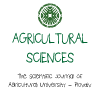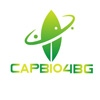Plant Physiology
|
Course title: |
Plant Physiology |
|
|
Course code: |
AFPSA |
|
|
ECTS: |
5 |
|
|
In-class hours |
Lectures: |
30 |
|
Laboratory work/Tutorials: |
30 |
|
|
Self-preparation hours |
Practical training: |
- |
|
Other: |
65 |
|
|
Total hours: |
125 |
|
|
Language: |
English |
|
|
Study cycle: |
Bachelor, Master, PhD |
|
|
Semester: |
Winter & Summer |
|
|
Faculty: |
Faculty of Agronomy |
|
|
Name of the lecturer(s): |
Prof. Andon Vasilev, PhD Prof. Malgorzhata Berova, PhD |
|
|
Mode of delivery: |
Face-to-face, distance learning, combination of both |
|
|
Prerequisites: |
- |
|
|
Learning outcomes of the course unit: |
The field of Plant Physiology includes the study of all the internal activities of plants—those chemical and physical processes associated with life as they occur in plants. This includes study at many levels of scale of size and time. At the smallest scale are molecular interactions of photosynthesis and the internal diffusion of water, minerals, and nutrients. At the largest scale are the processes of plant development, seasonality, dormancy, and reproductive control. Fundamental processes such as photosynthesis, respiration, water relations, plant nutrition, plant hormone functions, tropisms, nastic movements, photoperiodism, circadian rhythms, seed germination, dormancy and environmental stress physiology, are the main topics of the course. This is a one-semester course. It assumes that the student has had introductory biology or botany as a pre-requisite. |
|
|
Course contents: |
LECTURES: 1. Plant Cells and Water - Hydrostatic Pressure and Osmotic Pressure are Two Components of Water Potential. Water Potential is the Sum of its Component Potentials. Aquaporins Facilitate the Cellular Movement of Water. 2. Whole Plant Water Relations - Transpiration is Driven by Differences in Vapor Pressure. The Rate of Transpiration is Influenced by Environmental Factors. Roots Absorb and Transport Water. The Permeability of Roots to Water Varies. 3. Roots, Soils, and Nutrient Uptake - The Soil as a Nutrient Reservoir. Nutrient Uptake. Selective Accumulation of Ions by Roots. Electrochemical Gradients and Ion Movement. Cellular Ion Uptake. The Radial Path of Ion Movement Through Roots. 4. Plants and Inorganic Nutrients - The Essential Nutrient Elements. Beneficial Elements. Nutrient Functions and Deficiency Symptoms. 5. Bioenergetics and ATP Synthesis - Bioenergetics and Energy Transformations in Living Organisms. Energy Transformations and Coupled Reactions. Energy Transduction and the Chemiosmotic Synthesis of ATP. 6. The Dual Role of Sunlight: Energy and Information - The Physical Nature of Light. The Natural Radiation Environment. Photoreceptors Absorb Light for use in a Physiological Process. 7. Energy Conservation in Photosynthesis: Harvesting Sunlight - Photosynthesis is an Oxidation-Reduction Process. Photosynthetic Electron Transport. Photophosphorylation is the Light-Dependent Synthesis of ATP. Lateral Heterogeneity is the Unequal Distribution of Thylakoid Complexes. 8. Energy Conservation in Photosynthesis: CO2 Assimilation - Stomatal Complex Controls Leaf Gas Exchange and Water Loss. CO2 Enters the Leaf by Diffusion. How Do Stomata Open and Close? Stomatal Movements are Also Controlled by External Environmental Factors. The Photosynthetic Carbon Reduction (PCR) Cycle. Chloroplasts of C3 Plants also Exhibit Competing Carbon Oxidation Processes. 9. Allocation, Translocation, and Partitioning of Photoassimilates - Starch and Sucrose are Biosynthesized in Two Different Compartments. Photoassimilates are Translocated Over Long Distances. Phloem Translocation Occurs by Mass Transfer. Phloem Loading and Unloading Regulate Translocation and Partitioning. Photoassimilate is Distributed Between Different Metabolic Pathways and Plant Organs. 10. Cellular Respiration: Unlocking the Energy Stored in Photoassimilates -Cellular Respiration Consists of a Series of Pathways by Which Photoassimilates are Oxidized. The Oxidative Pentose Phosphate Pathway is an Alternative Route for Glucose Metabolism. Respiration Rates Respond to Environmental Conditions. 11. Nitrogen Assimilation - The Nitrogen Cycle: A Complex Pattern of Exchange. Biological Nitrogen Fixation is Exclusively Prokaryotic. Legumes Exhibit Symbiotic Nitrogen Fixation. The Biochemistry of Nitrogen Fixation. NH3 Produced by Nitrogen Fixation is Converted to Organic Nitrogen. Agricultural and Ecosystem Productivity is Dependent on Nitrogen Supply. 12. Carbon and Nitrogen Assimilation and Plant Productivity - Productivity Refers to an Increase in Biomass. Carbon Economy is Dependent on the Balance Between Photosynthesis and Respiration. Productivity is Influenced by a Variety of Environmental Factors. 13. Responses of Plants to Environmental Stress - What is Plant Stress? There are Features Common to all Stresses. Plants Respond to Stress in Several Different Ways. 14. Acclimation to Environmental Stress - Plant Acclimation is a Time-Dependent Phenomenon. Acclimation is Initiated by Rapid, Short-Term Responses. Long-Term Acclimation Alters Phenotype. 15. Adaptations to the Environment - C4 Plants are Adapted to High Temperature and Drought. Crassulacean Acid Metabolism is an Adaptation to Desert Life. C4 and CAM Photosynthesis Require Precise Regulation and Temporal Integration. 16. Development - Growth, Differentiation, and Development. Meristems are Centers of Plant Growth. Seed Development and Germination. From Embryo to Adult. 17. Growth and Development of Cells - Cell Division. Cell Walls and Cell Growth. Modify Development. Signal Transduction Includes a Diverse Array of Second Messengers. 18. Hormones I: Auxins - The Hormone Concept in Plants. Auxin is Distributed Throughout the Plant. The Principal Auxin in Plants is Indole-3-Acetic Acid (IAA). IAA may be Stored as Inactive Conjugates. IAA is Deactivated by Oxidation and Conjugation with Amino Acids. Auxin is Involved in Virtually Every Stage of Plant Development. 19. Hormones II: Gibberellins - There are Three Principal Sites for Gibberellin Biosynthesis. Gibberellins Affect Many Aspects of Plant Growth and Development. Gibberellins Act by Regulating Gene Expression. . 20. Hormones III: Cytokinins - Cytokinins are Adenine Derivatives. Cytokinins are Synthesized Primarily in the Root and Translocated in the Xylem. Cytokinins are Required for Cell Proliferation. Cytokinin Receptor and Signaling. 21. Hormones IV: Abscisic Acid, Ethylene, and Brassinosteroids - Abscisic Acid. 2 Ethylene. Brassinosteroids. 22. Photomorphogenesis: Responding to Light - Photomorphogenesis is Initiated by Photoreceptors. Photochromes: Responding to Red and Far-Red Light. Cryptochrome: Responding to Blue and UV-A Light. Photochrome and Cryptochrome Mediate Numerous Developmental Responses. Chemistry and Mode of Action of Phytochrome and Cryptochrome. Some Plant Responses are Regulated by UV-B Light. De-Etiolation in Arabidopsis: A Case Study in Photoreceptor Interactions. 23. Tropisms and Nastic Movements: Orienting Plants in Space - Phototropism: Reaching for the Sun. Gravitropism. Nastic Movements. 24. Measuring Time: Controlling Development by Photoperiod and Endogenous Clocks - Photoperiodism. The Biological Clock. Photoperiodism in Nature. 25. Flowering and Fruit Development - Flower Initiation and Development Involves the Sequential Action of Three Sets of Genes. Temperature can Alter the Flowering Response to Photoperiod. Fruit Set and Development is Regulated by Hormones. 26. Temperature: Plant Development and Distribution - Temperature in the Plant Environment. Bud Dormancy. Seed Dormancy. Thermoperiodism is a Response to Alternating Temperature. Temperature Influences Plant Distribution. 27. Secondary Metabolites - Secondary Metabolites: A.K.A Natural Products. Terpenes. Glycosides. Phenylpropanoids. Secondary Metabolites are Active Against Insects and Disease. Jasmonates are Linked to Ubiquitin-Related Protein Degradation. Alkaloids.
LABORATORY PRACTICAL WORK: 1. Osmotic adjustment in plant cell. Turgor pressure, plasmolisis and deplasmolisis. 2. Osmotic properties of plant cell. Suction force of the plant cell. 3. Water movement in plants. Tissue-water relations in plants. 4. Determination of the rate of transpiration. 5. Separation, identification and quantitation of plant pigments. 6. Determination of the rate of photosynthesis . 7. Respiration of plant and determination of enzymes. Enzyme assay. 8. Determination of the rate of respiration. 9. Mineral nutrition of plants. Nutrient functions and deficiency symptoms. 10. Resistance of plants to environmental stress. |
|
|
Recommended or required reading: |
1. Taiz L,. E. Zeiger. 1991. "Plant Physiology", 2nd ed. Sunderland, MA, USA: Sinauer. 2. Lambers H., F. S. Chapin, T. L. Pons. 2008. "Plant Physiological Ecology", 2nd ed., Wiley. |
|
|
Planned learning activities and teaching methods: |
The course includes the following mandatory components: lectures, laboratory work, seminars, as well student self-preparation. The lectures and laboratory practical work are supported by extensive literature and material basis. The lectures are delivered by means of PowerPoint presentations. The seminars take the form of a discussion between the students and the lecturer, with reference to pre-selected topics. |
|
|
Assessment methods and criteria: |
The course ends with a written examination. The latter includes a pre-defined set of questions, which is drawn from the course material. |
|
 - Събития по случай 80-я юбилей на АУ
- Събития по случай 80-я юбилей на АУ











